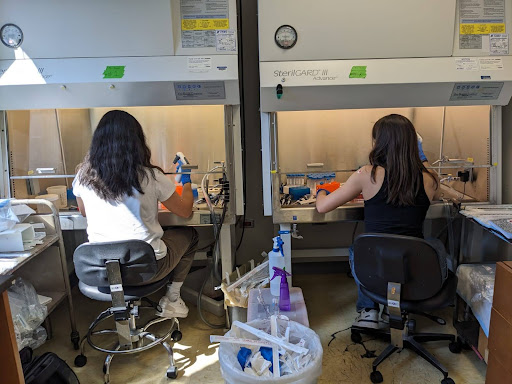Into the SSRP: The Stress Machine Track
The Stress Machine track offered young researchers a unique opportunity to explore the intricate relationship between the brain and stress responses.

The Stress Machine track observed the impact stress has on the mind. One of the main features of the track was its interdisciplinary nature. The track was divided into three research areas: molecular neuroscience, neuro-based bioinformatics, and behavioral neuroscience. This structure allowed students to approach stress from multiple angles, from cellular responses to actual behavior.
Merima Šabanović, one of the track scientists, explains her motivation behind leading the track “I love teaching. The idea of creating this mini lab for summer was really, really fun. I loved the idea of bringing neuroscience because I think in high school you don’t get to learn so much of it because it’s such a techie field.”
The track didn’t shy away from complex techniques. Students in the molecular neuroscience concentration worked with cell cultures and learned basic molecular biology techniques. The bioinformatics group dove into computational analysis of rich neuroscience datasets, while the behavioral neuroscience team analyzed pre-recorded mouse fear conditioning experiments.
As in any real research environment, not everything went according to plan. However, these challenges provided valuable lessons in perseverance and teamwork – essential skills for any scientist.

As the program concluded, students focused on another crucial aspect of scientific work: communication. They prepared posters and presentations, learning to convey complex scientific concepts in an accessible manner.
This exercise in science communication will serve these students well in their future academic and professional endeavors.
Reflecting on the program, Šabanović shares a favorite memory: “I think our post-museum hangout and having everyone feel a lot more open… those little hangouts at the end of the day, especially when you guys just really were starting to become friends.”
As the program end, these young researchers are walking away with more than just new lab skills. They’ve experienced the challenges and triumphs of real scientific research, developed critical thinking skills, and gained insight into the complex world of stress neuroscience.
